Amid the competitive pace of change in the world of networking technology, Dell QSFP Optical Transceiver Modules have a pivotal role in guaranteeing high-performance interconnectivity among data centers and enterprise networks. These modules enable data to be transmitted over optic fiber cables with great flexibility, speed, and reliability. Designed for use in high-density environments, Dell QSFP transceivers are able to handle a variety of data rates and standards and, therefore, can be used for different networks. The aim of this blog is to focus on the Dell QSFP Optical Transceiver Modules in terms of their particular scope of use, their benefits, and specifications, as well as address how they can improve networking infrastructure in consideration of the increasing need for data-overloaded applications.
What is the Dell QSFP Transceiver?
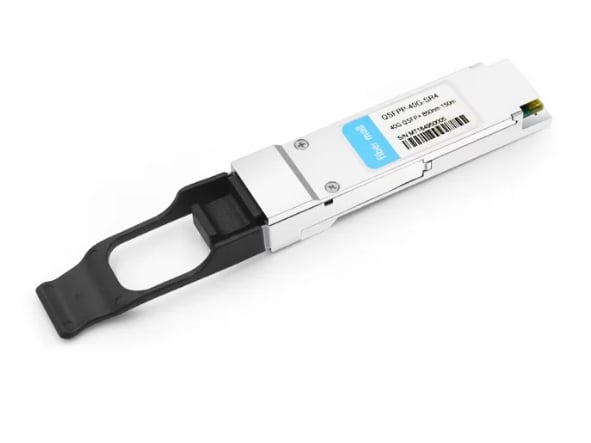
The Dell QSFP (Quad Small Form-factor Pluggable) Transceiver is a fiber optic module that serves the purpose of transmitting data over wide areas through high-speed optical communication channels. It can work on multiple data rates, which go up to 40 Gbps, and is compliant with a vast number of standards such as IEEE and MSA. The transceiver is compatible with a wide range of Dell networking devices to allow effective and efficient interfaces. It allows for a high-density configuration of the switch which makes it well suited for environments where a premium on space and high throughput is required.
Understanding the transceiver
With the optical networking systems in mind, the Dell QSFP Transceiver uses the essential method of converting electrical signals to optical signals and vice versa. This method is achieved by using a laser and a photodiode, which provide a means for data to be transmitted and received. The module is designed for bi-directional communication, enabling data to be sent and received concurrently and thus improving the use of bandwidth. Further technical information suggests that there are four distinct channels in a module that are used to transmit and receive data, with each channel supporting a maximum of 10Gbps, hence 40Gbps in total for the Quad module. Additionally, the specifications for power consumption of Dell QSFP Transceivers are set to low levels of thermal output while enabling high efficiency, which has another significant impact on the reduction in energy costs of many installations. They also come with Digital Diagnostic Monitoring (DDM) capabilities, which monitor the temperature, voltage, and optical power levels, hence providing real-time diagnostic information on the state of the equipment for ease of maintenance. These conditions improve not only the reliability of the module but also its versatility in many networking situations.
Key specifications and features
Data Rate: A maximum data rate of 10 Gbps is possible on each channel, with a total possible capacity of 40 Gbps for four channels.
- Transmission Range: The transmission range can be supported for distances close to about 10 kilometers but is dependent on the type of fiber and configuration of the network.
- Wavelength: This wavelength operates at 850 nm, 1310 nm or 1550 nm and hence can be used in a wide range of network environments.
- Form Factor: This QSFP (Quad Small Form-factor Pluggable) design is compact and easy to deploy, so it is used in high-density network designs.
- Connector Type: The type of connector is LC duplex, which is ideal for providing secure and standardized connections.
- Power Consumption: Optimized for low thermal output with a consumption of typically less than 1.5 watts per module.
- Digital Diagnostic Monitoring: Real-time diagnostics for temperature, voltage, and optical power output are some of the operational diagnostics available in this unit.
- Compatibility: This unit can be used on Dell networking with its associated devices as well as other standard devices.
- Operating Temperature Range: Specifications allow for use in the temperature range of between 0°C and 70°C which allows for greater installations in different terrains.
- Hot-Pluggable: Changes can easily be made with minimal interruption to the network.
These technical specifications and features in addition to the performance characteristics demonstrate the versatility of the Dell QSFP Transceiver in the enterprise networking solutions.
Benefits for your network
- Widened Bandwidths: By using the Dell QSFP Transceiver, it is possible to expand the high data rate to your network and utilize high multipurpose data-oriented applications making sure your network covers all parts of the infrastructure as required.
- Increased Transmission Distance: This transceiver has range performance of up to 10 kilometers which is able to provide a great network arrangement which enables wide area communication of network elements at longer distance without loss of quality of service.
- Increased Energy efficacy: Use of the transceiver lowers the operational costs due to its low power usage and lesser impact to the environment; thus it is a resource efficient option for the contemporary data centers and corporate class networks.
How Compatible Is the Dell QSFP with Other Devices?
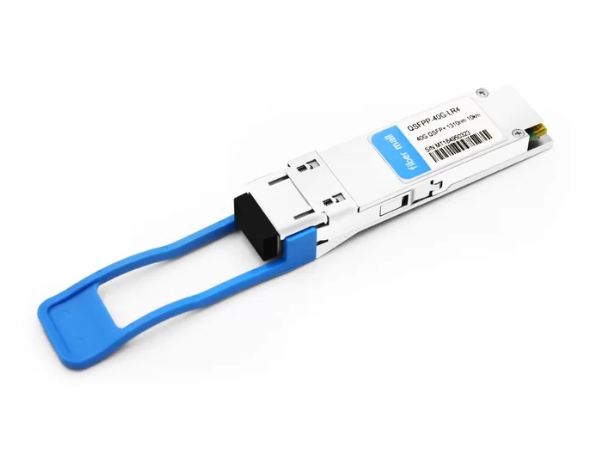
Ensuring compatibility with your setup
For your setup to be compatible, the Dell QSFP Transceiver has been developed to extend support to Dell’s networking equipment as well as other standard industry networking devices. It supports multiple networking standards and protocols, allowing it to work smoothly on various infrastructures. Configuration and deployment are simple, and because the transceiver is hot‐pluggable, it is easy to install without interruption to the network. Its operational parameters, being wide range temperature and high operational bandwidth, will enable versatility and guaranteed performance in different conditions.
Exploring Dell support options
In order to improve the performance and dependability of QSFP Transceivers and other networking devices, Dell offers a variety of support programs and services. The available support services are meant to meet a wide range of needs from the lowest level of trouble up to a high-level helpdesk.
- Technical Support: The Dell technical support is available 24/7 and is manned by qualified personnel who are able to handle and resolve sophisticated concerns. Such support includes the provision of remote diagnostics, instruction on suitable configurations, and updates on firmware.
- Warranty Services: Dell offers warranty service plans which allow customers to perform parts replacement and repair for much lower costs. These are plans that were put in place to minimize the amount of downtime that is caused by equipment failures as well as to enhance certainty over costs.
- On-Site Services: In cases that require on-site intervention, Dell provides immediate response services whereby qualified technicians come to the site and diagnose and fix the problem as swiftly as possible.
- Online Resources: Clients are provided with a large collection of online resources such as, operational and installation instructions, and knowledge base content. These resources are amended routinely whenever there is an upgrade in the products or a better mode of doing things is determined.
- ProSupport Suite: With the ProSupport Suite, customers are assisted through service provision which covers proactive maintenance, where there is issue detection and forecasting aimed at fixing any issues before they are felt on the network. This also services environments where there is a greater need for security and availability.
They are also provided with options much needed and are feel welcome to ask such questions via telephone, by email or chat services making sure customers uphold their network infrastructure’s integrity and operability.
Testing for compatibility with current devices
When executing compatibility testing with the existing devices, specific verification of the functioning of your hardware or software over various devices is done. As per the leading technology websites, this activity may include, as a minimum, the following:
- Establishing Needs: just take your equipment and enumerate its specifications: software, each and every piece of hardware installed, network settings, or structure. This ensures a comprehensive understanding of the ecosystem your product will interact with.
- Cross-Device Testing: Cross-platform testing tools support the emulation of various devices or real test devices and conduct cross-device tests. This guarantees compatibility with various environments and helps resolve unforeseen issues resulting from various configurations.
- Make Use of Testing Tools: The strategy of exploiting automated testing tools is the most effective approach in this case. It also helps address performance and compatibility issues efficiently. This is crucial as it helps invigilate that the users’ needs are satisfactorily addressed on the various devices.
These strategies are very important in enhancing the chances of encountering incompatibility issues being reduced significantly and the integration of new products into existing systems becoming easier.
Where to Find Product Reviews for Dell QSFP Transceiver?
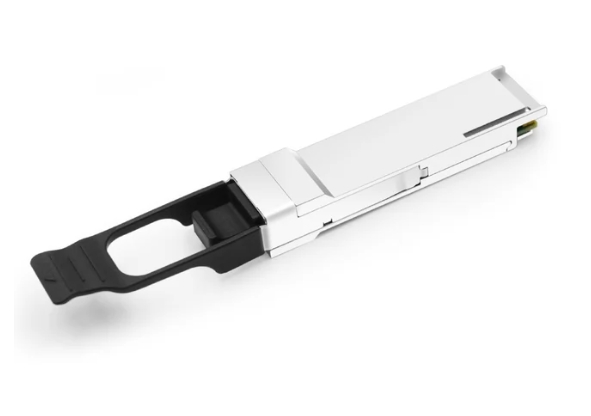
Importance of review in purchasing decisions
Through such reviews, potential customers get an overview of the effectiveness of the product and the user satisfaction, which, in this case, is the Dell QSFP Transceiver. In this sense, they provide insights into some concerns or benefits that may not appear in formal written offers, like specifications and categorized performance. Apart from serving as a medium of communication, it is possible to make an evaluation of the target product against other products in the same market, determining its suitability in other targeted network settings and thus allowing ease in decision making and reducing chances of loss on investment.
How to test a transceiver effectively
A transceiver can be tested in a comprehensive manner by combining functional evaluation with performance assessment in a systematic manner. The first step involves testing the physical layer of the transceiver, which encompasses testing the module for correct seating, confirmation of the LED status, and module and host compatibility. Then, proceeding to an optical power measurement, output and input power levels are to be checked to confirm if the levels are within the system’s tolerable levels. An optical time domain reflectometer (OTDR) is used to detect and locate any physical damage on the fiber optic cables that may be connected to the transceiver.
This is followed by bit error rate testing (BERT), which determines the errors and distortions of data in the data stream and the accuracy of the transceiver under various conditions. Link diagnostics can also be implemented to ascertain the integrity of the signal, the throughput and the latency of the link. Gather and analyze statistics on throughput, error rates, and power consumption under different degrees of network stress. In addition, apply real-world operating conditions of temperature and electrical noise to test the equipment for its intended use. Carefully note all test results recorded for future scrutiny and to assist in efficient and quick diagnosis of problems. These elaborate testing procedures and processes guarantee that a transceiver works to its full capability and provides satisfactory integration and performance maintenance.
Top online resources for review and feedback
- G2: G2 performs a major role of locally sourced information which is in the form of reviews and ratings about most software applications and services. It allows companies to have more options because it shows reviews from actual users. G2 is also useful for comparing multiple products and understanding their advantages and disadvantages as it has features such as comparison charts and performance metrics.
- Capterra: As a software catalog site, Capterra has extensive user reviews and ratings of different software and applications. It has quite a number of categories and subcategories that help users to easily look for the most relevant software to their needs. The structure of the platform provides a set of options allowing to use adjustable searches and compare aspects such as prices, features, reviews for more relevant results.
- Trustpilot: Trustpilot has considerable worldwide recognition due to its customer opinion collection agency; everyone can publish information about all companies in the world. It enables businesses to seek consumer feedback in pursuit of developing credibility and enhancement of an online reputation. The role of transparency and community feedback in Trustpilot is fundamental in examining the level of customer satisfaction and improvement of the products and services offered.
How Does the Dell QSFP Optical Module Enhance Networking?
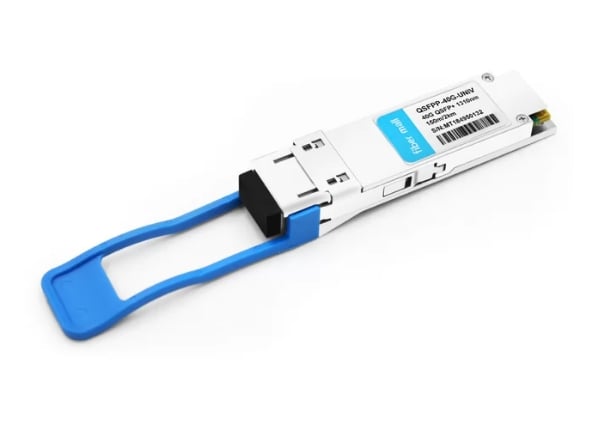
Role of optical transceiver in data transmission
In today’s telecom networks, optical transceivers represent a true revolution in data exchange, through optical fibers they allow a virtually limitless data exchange to take place. At the transmitter end, they encode and convert information in the form of electrical signals into optical signals, and at the receiver end, it does the exact opposite. This allows for data to be sent across vast distances with great speed and very limited degradation. These devices provide high data rate transmission over different distances, which makes them ideal for different kinds of networking topology. Optical transceivers become useful in the improvement of networks because they allow effective utilization of the available bandwidth which is needed for network capacity and growth.
Understanding wavelength and its impact
In the field where you are working, there is highly likely a common denominator or baseline, and that is a wavelength, which is the distance between two instances of the same phase in adjacent cycles of a wave. Optical communication would be difficult without wavelength because it broadens the scope and data transfer limits in the most effective optical networking. An example would be in fiber optics, where optical communication employs C-band and L-band, which have wavelengths of 1530 to 1565 and 1565 to 1625 nanometers, respectively. The longer the fiber optic cable, the higher its transmission efficiency and performance.
As a result, the WDM was invented, which multiplies network capacity enormously, which in effect equals multiple transmission of video signals across multiple wavelengths. Including multiple images with various characteristics is more than just possible; it is convenient because it allows for more efficient use of available bandwidth. In consequence, with multi-wavelength fiber channel designs, the large expansion from DMDW allows for greater channel spacing and higher capacity channels, which are easier to supply than the old ones. This explains how and why optical systems interconnected over wide-area networks (WAN) use a tremendous amount of bandwidth. Therefore, it contributes significantly to the design of high-capacity switches.
Fiber connectivity advancements
The last few years have witnessed several developments in fiber connectivity, which have positively impacted the efficiency of networks in terms of performance and transmission of information. Some of the main developments include the use of glass materials with higher purity, making it possible to transmit signals over long distances without much loss. Moreover, new architectures of fiber optic cables, like multi-core fibers, allow the cable to carry numerous data devices and support simultaneous transmission of data over multiple paths in a single fiber strand. Fortified fiber optic cables that enhance buffing and coating technologies are more robust and resistant to wear and tear from the external environment while guaranteeing long-term effective service. More so, applications of new theories in optical signal amplification, such as the use of Raman amplifiers, strengthen the signal over long distances, hence multiplying the fiber networks. These changes together render more features for contemporary optical networks, which are necessary to meet the ever-increasing requirements for rapid data exchange with a high bandwidth capacity.
What are the Technical Specifications of Dell QSFP?
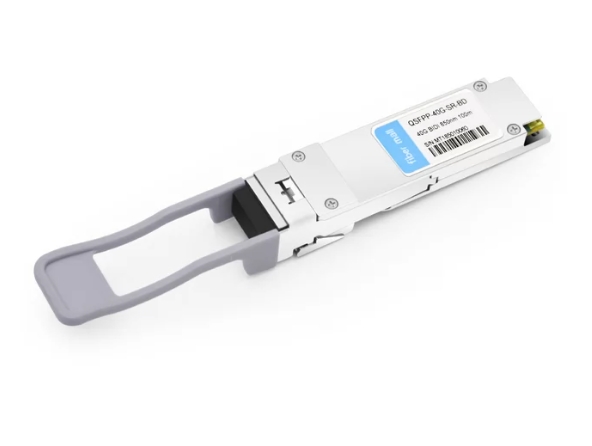
Detailed specification overview
Dell’s QSFP (Quad Small Form-factor Pluggable) supports high-speed data rates that reach up to 40 Gbps. The unit is constructed with hot-swappable features, allowing easy replacements without interrupting the network. The port has low power usage, consuming less than 1.5 watts per port. The Device complies with IEEE standards ensuring that it can work with different types of networking devices. This device employs MPO/MTP interfaces within its connector types, which are essential in optimizing fiber cabling. Optical reach differs from version to version, which offers short-range (SR) reachable distances of 100 meters with OM3 fiber and long-range (LR) reachable distances of 10 kilometers with single-mode fiber connections.
Exploring operating parameters
Dell’s QSFP modules, like all equally important factors in networking systems, have specs like operating conditions, which ensure reliable communication. Such parameters include a range of temperatures, which usually are between 0 degrees Celcius and 70 degrees Celcius, along with a relative humidity of 5% to 95% non-condensing. Strikingly, power dissipation is kept under 3.5 watts. Therefore, the modules are suitable for energy-intensive environments. Not least, the transceivers work within a voltage range of 3.15V to 3.47V which allows small variations of the electrical supply while maintaining performance. Required signal integrity is achieved by employing error correction protocols with low bit error rates (BER), normally better than 10^-12. These parameters must be monitored to keep the modules and the entire network functioning properly.
Monitoring capabilities and features
Dell QSFP modules have a large subset of internal monitoring features aimed at improving the diagnosis and operational performance of these modules. These modules are capable of supporting Digital Diagnostics Monitoring (DDM) functions which provide access to important parameters such as optical output power, optical input power, temperature, voltage supply, and laser bias current in real-time. Such information aids in carrying out preventive maintenance and diagnosing and resolving failures quickly by informing network administrators of possible problems before they affect the performance of the system. Also, the modules are provided with status reporting functionalities using devices that use standard communications protocols such as I2C, which makes them interoperable with multiple network management systems. With such monitoring capabilities, network operators can avoid unplanned downtimes by maintaining high levels of uptime and reliability.
Reference Sources
Frequently Asked Questions (FAQs)
Q: What types of products are Dell QSFP Optical Transceiver Modules?
A: Dell QSFP Optical Transceiver Modules are equipped with built-in networking ports and connections and feature high performance and capacity. These are widely used in deployment scenarios providing fiber connectivity to the ports through which the distances of the networks could be vastly expanded. These can often be seen in data centers and high-speed networking locales.
Q: What should I consider in order to purchase the correct transceiver?
A: While selecting the appropriate transceiver, different factors should be mentioned, like the kind of data rate required (e.g., 40GbE, 100GbE, etc.), the distance that is supposed to be reached, and also the required kind of fiber optic cable (for instance, MMF or SMF). It is also important to think of the form factor, a subdivision of LC or connectors of MPO, and if there’s any need for active optical cables.
Q: What are the specifications for each QSFP-40G-LM4 transceiver?
A: The above-mentioned transceiver connects various devices using the basic network configurations of the 40GbE SMF with connectors of LC while standing on a wavelength of 1310 nanometers through its designed purpose of providing longer ranges of network extensions.
Q: Where can one acquire the specific type of QSFP Optical Transceivers produced by Dell?
A: One can find vendors that are compliant with the QSFP standard and supply the necessary transceivers. It’s also possible to find a number of other ways of acquiring the parts through third-party deliverers, such as Dell’s own website.
Q: What does a QSFP-40G-SR4 Transmitter bring?
A: A QSFP-40G-SR4 transceiver facilitates 40GbE connections over multiplayer fibers with MPO connectors. This transceiver works on an 850nm wavelength which is good for more short-range usage.
Q: How many wires does a 100GbE QSFP work on?
A: A Single QSFP transceiver can transmit 100GbE using advanced optics Multiprotocol Fiber (MPF), which can connect and function efficiently across wide bandwidths using two different types of cables: Singlemode Fiber (SMF) or Multimode Fiber (MMF).
Q: What is the use of Symbol Constant Optical Power Transmitter, P, or PR in any transceiver?
A: The amount of power that is sent out from the transmitter is called Transmitted Optical Power, and the amount of power that is coming into the device is known as Received Optical Power. Both of these aid in the proper transfer of data and maintaining network strength.
Q: Where Do I Look For Help On Dell QSFP Transmitter/receiver Support?
A: Dell’s support for their products accompanying the QSFP Transmitter/ Receiver can be found by visiting the device’s facilities pages on their main site pages or contacting them via their US page. They have plenty of info available, including smart connectors, how to mount them, and how to fix basic issues.
Q: Do Dell QSFP transceivers function properly with SFP interfaces?
A: Due to the fact that they meet a different set of form factor pluggable standards, Dell QSFP transceivers are not normally SFPs direct replacements. Nevertheless, some configurations come with adapters so that different types of interfaces can be interconnected.
Q: What is the relevance of the 1310nm wavelength in optical transceivers?
A: The 1310nm wavelength becomes important in optical transceivers as it helps to lessen the amount of signal loss when transmitting data across long stretches of single-mode fiber so that it can be used for long-range network applications.
Related Products:
-
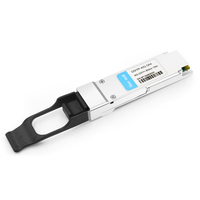 DELL 430-4593 Compatible 40G QSFP+ SR4 850nm 150m MTP/MPO MMF DDM Transceiver Module
$25.00
DELL 430-4593 Compatible 40G QSFP+ SR4 850nm 150m MTP/MPO MMF DDM Transceiver Module
$25.00
-
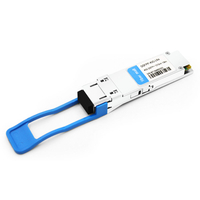 DELL QSFP-40G-LR4 Compatible 40G QSFP+ LR4 1310nm (CWDM4) 10km LC SMF DDM Transceiver Module
$149.00
DELL QSFP-40G-LR4 Compatible 40G QSFP+ LR4 1310nm (CWDM4) 10km LC SMF DDM Transceiver Module
$149.00
-
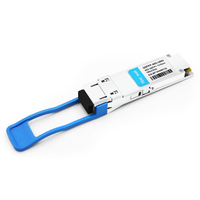 Dell QSFP-40G-LM4 Compatible 40G-LX4 QSFP+ 1310nm 2km DDM Duplex LC SMF/MMF Optical Transceiver Module
$149.00
Dell QSFP-40G-LM4 Compatible 40G-LX4 QSFP+ 1310nm 2km DDM Duplex LC SMF/MMF Optical Transceiver Module
$149.00
-
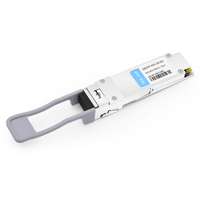 Dell QSFP-40G-BIDI Compatible 40G QSFP+ SR Bi-Directional 850nm/900nm 100m/150m Duplex LC MMF Transceiver Module
$249.00
Dell QSFP-40G-BIDI Compatible 40G QSFP+ SR Bi-Directional 850nm/900nm 100m/150m Duplex LC MMF Transceiver Module
$249.00
